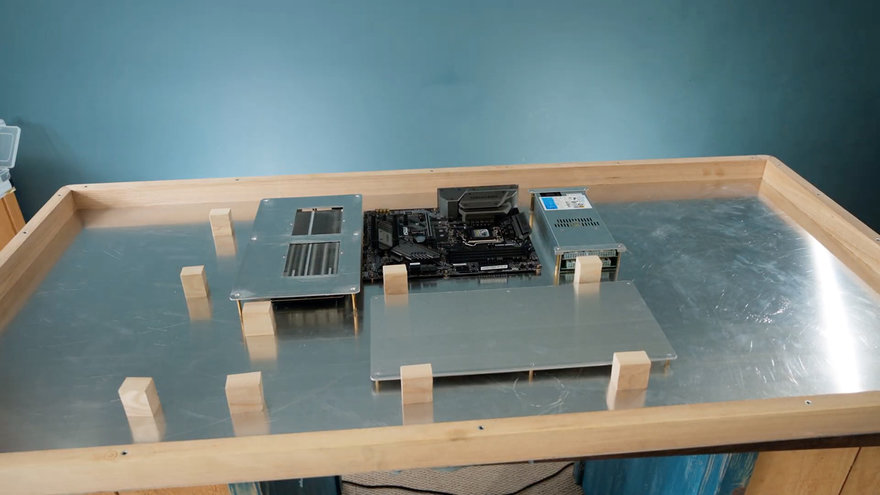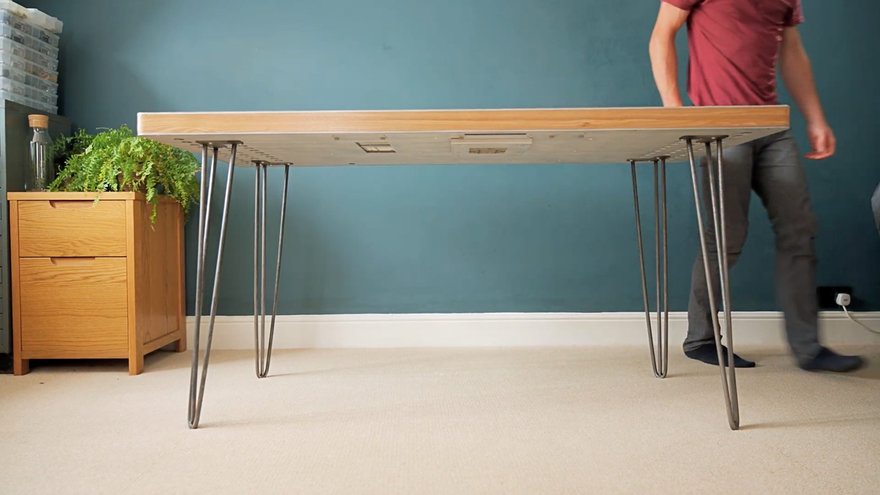Here's a question every industrial design professor ought raise with their students: To what extent should objects be visible or invisible? While furniture, hair dryers and circular saws obviously fall in the former category, what about computers, which most of us use for work, but which can be interfaced via smaller objects like keyboards and mice? Shouldn't the computer itself just disappear? Do consumers enjoy having a whirring plastic or metal box atop or beneath their desk?
YouTuber Matt Perks has tackled this question before, as seen in "Should Computers be Designed as Pieces of Furniture?", but here he takes things one step further. Perks reasoned that a standard 2"-thick desktop surface ought have enough room to store every component required to run a PC, and that furthermore this design could be sustainable, with individual components easily located and replaced as necessary. He also figured he could make the desk look good, providing no visual clues that it contained technology.

This is a long build, but was a fun one to watch--because this is exactly the type of prototyping process an industrial designer might be tasked with at a consultancy, if posed the computer-as-furniture question by a client. Perks has to think through and solve the problems of structural integrity, durability, functionality, future-proofing, ergonomics, aesthetic customizability, noise considerations, and the very tricky problem of how to handle the cooling (which he handled in a particularly brilliant, if pricey way).







I'd say it's well worth the watch:
from Core77 https://ift.tt/34USobm
via IFTTT

No comments:
Post a Comment